
With a keen sense of observation, she has captured the posthumous play from the perspective of the participants - the survivors who have bent over the graves.
Van Schie's images convey the eerie effect to the viewers of her work. They transport the viewers. At the same time, she has an eye for the intriguing hidden world of playful design and communication. The artist speaks of a 'mental space' where mass-produced objects take on an unexpected meaning. The small personal monuments, subject to change and decay over time, demand intimate attention. Only then does the vision of a fundamental form of ritual unfold.
Jet van Schie has documented and recorded the sensitive and aesthetic call of the heart. Home altars left at the mercy of nature. Even a load of plush animals irrevocably perishes in a striking glass box. Who will wake them up with a kiss? Or see the green rabbit next to the plastic, an orange duck wrapped up, seemingly lost in the dark shelter of the bushes. Where are they going? What is their fate?
Series titled Tombs Animal'
Not only deceased children but also beloved pets come to the attention posthumously. Many an obituary is decorated with their paw prints: they become like children. They also have richly decorated tombs. The stone image of a dog on a tile on top of the tomb seems to be a symbol of eternal loyalty. The placement of such durable objects is an urgent expression of reciprocity, a solemn promise by the owners that they will not break ties with the buried animals. As a sign of this, a stone Labrador keeps watch over the dog's grave. Plants mark the spot where the animal last walked.

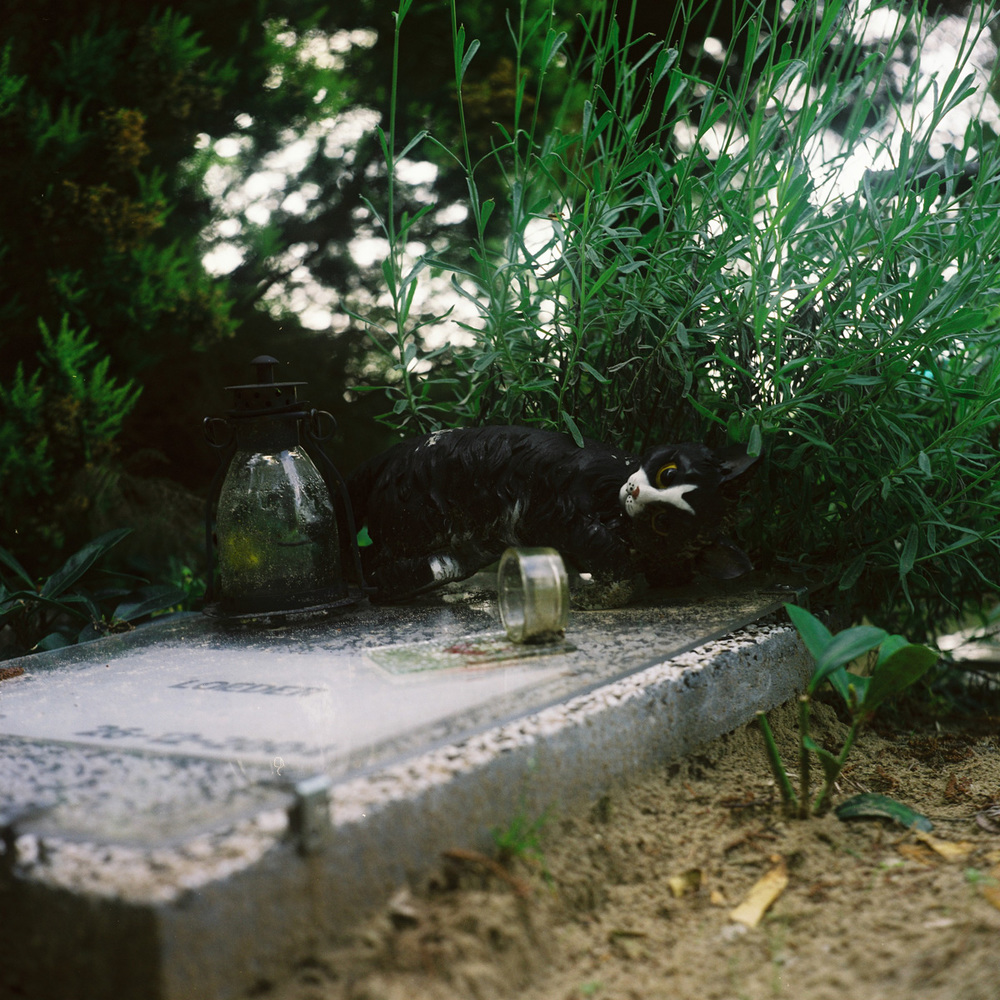
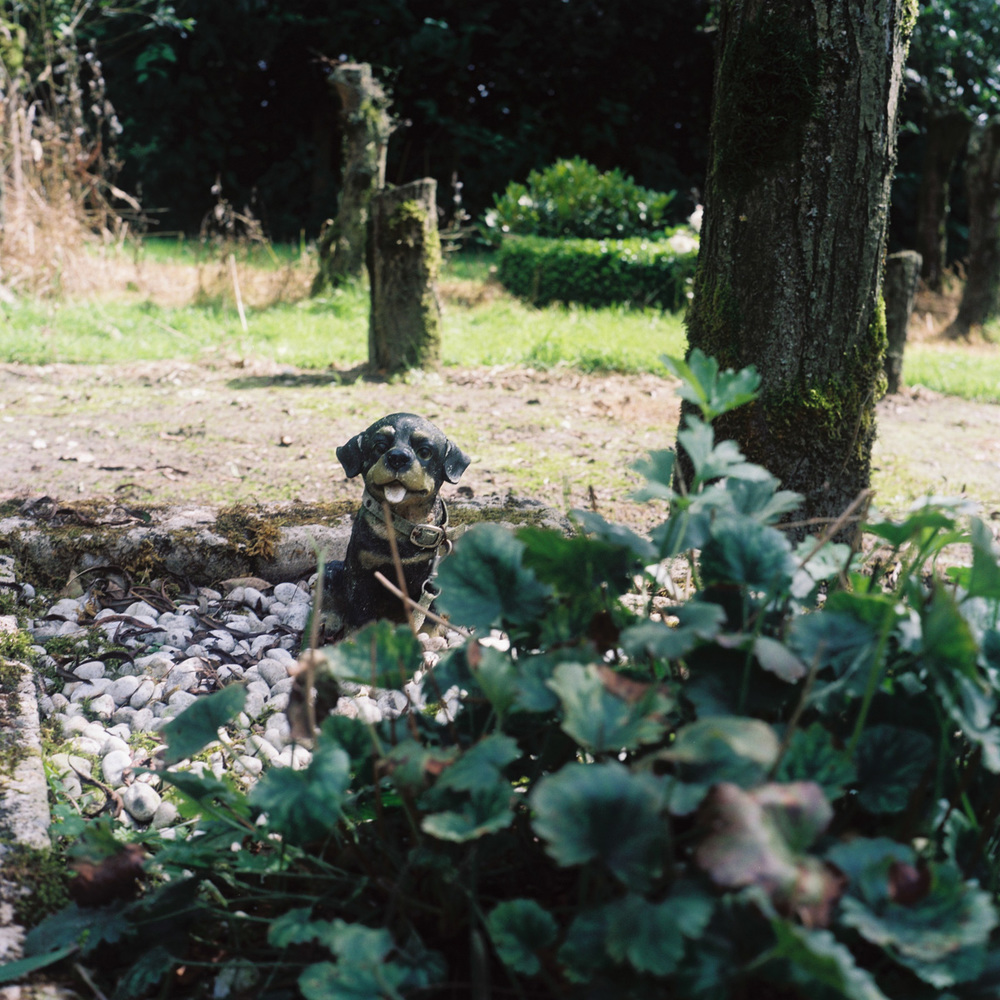
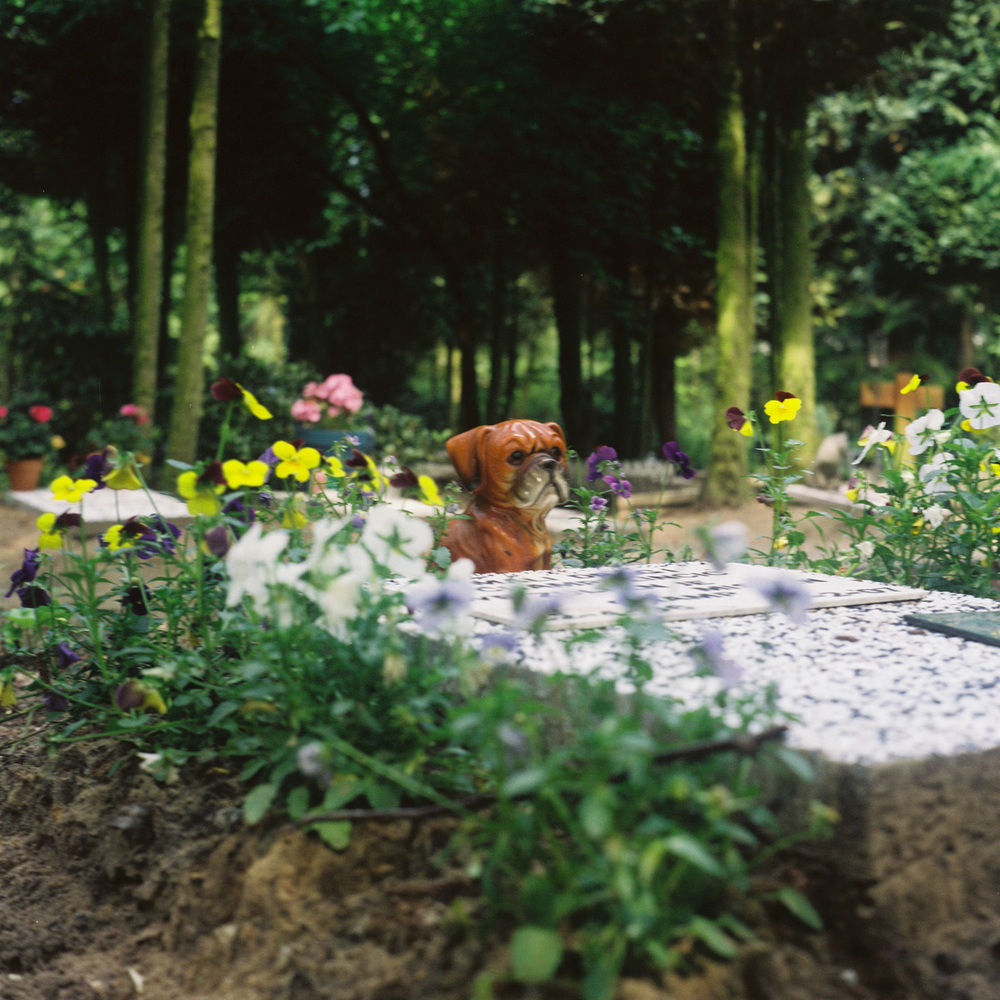
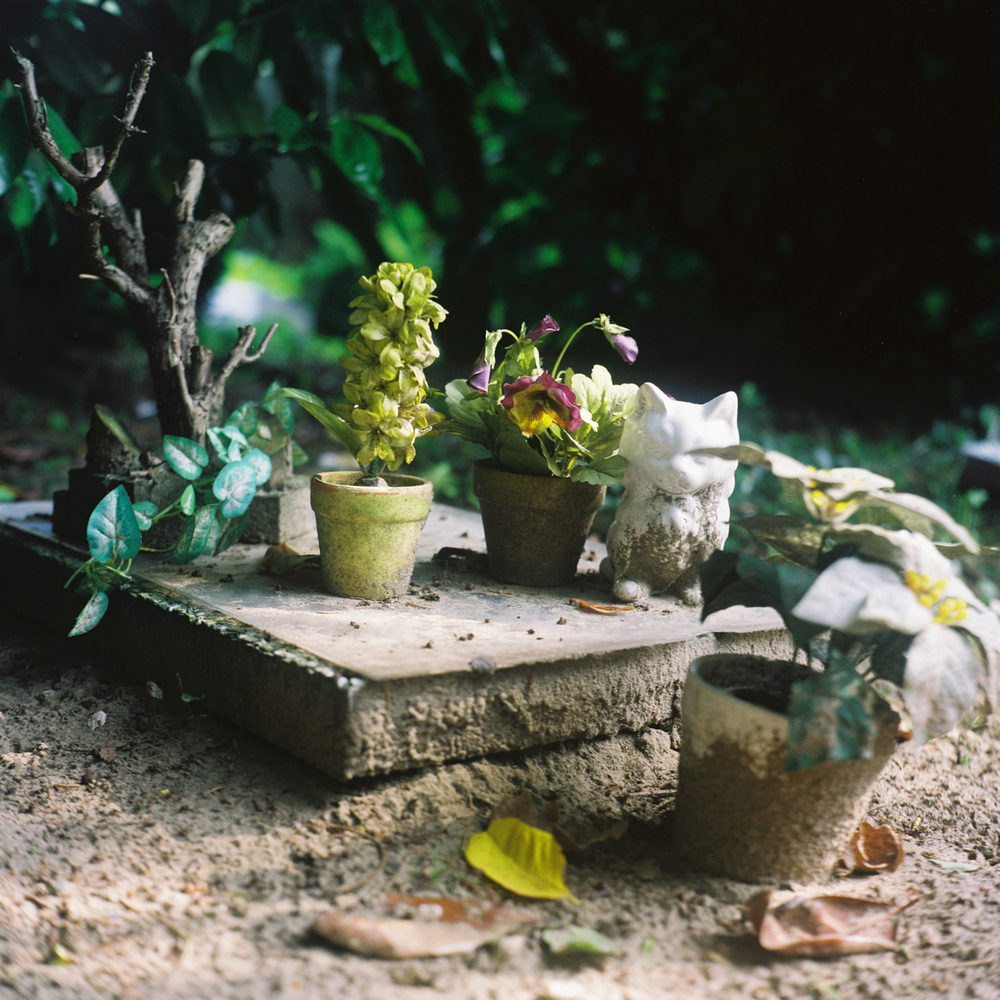
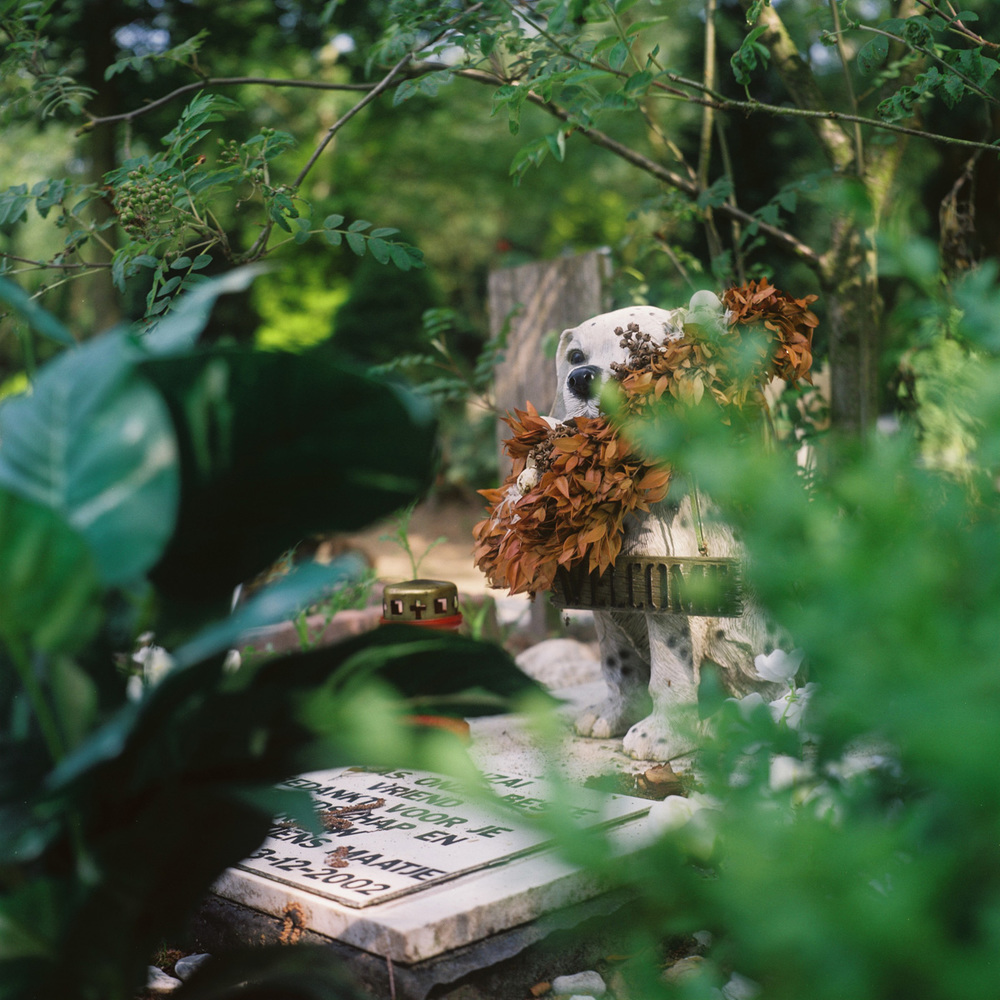







With a keen sense of observation, she has captured the posthumous play from the perspective of the participants - the survivors who have bent over the graves.
Van Schie's images convey the eerie effect to the viewers of her work. They transport the viewers. At the same time, she has an eye for the intriguing hidden world of playful design and communication. The artist speaks of a 'mental space' where mass-produced objects take on an unexpected meaning. The small personal monuments, subject to change and decay over time, demand intimate attention. Only then does the vision of a fundamental form of ritual unfold.
Jet van Schie has documented and recorded the sensitive and aesthetic call of the heart. Home altars left at the mercy of nature. Even a load of plush animals irrevocably perishes in a striking glass box. Who will wake them up with a kiss? Or see the green rabbit next to the plastic, an orange duck wrapped up, seemingly lost in the dark shelter of the bushes. Where are they going? What is their fate?
Series titled Tombs Animal'
Not only deceased children but also beloved pets come to the attention posthumously. Many an obituary is decorated with their paw prints: they become like children. They also have richly decorated tombs. The stone image of a dog on a tile on top of the tomb seems to be a symbol of eternal loyalty. The placement of such durable objects is an urgent expression of reciprocity, a solemn promise by the owners that they will not break ties with the buried animals. As a sign of this, a stone Labrador keeps watch over the dog's grave. Plants mark the spot where the animal last walked.